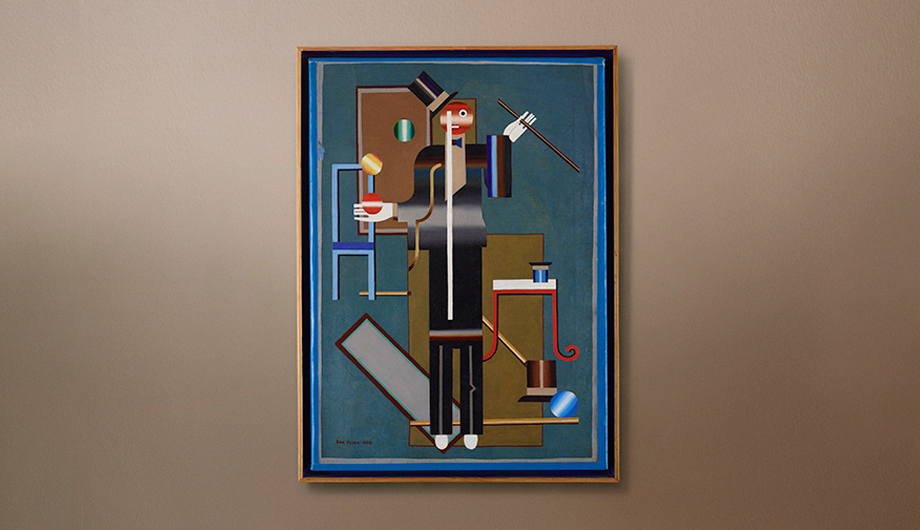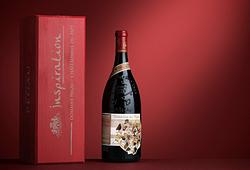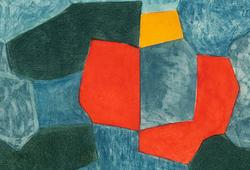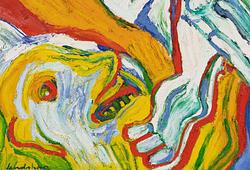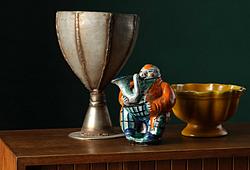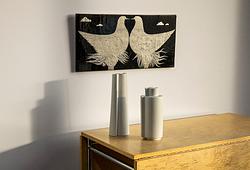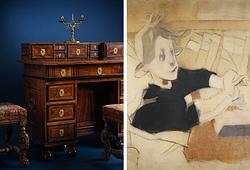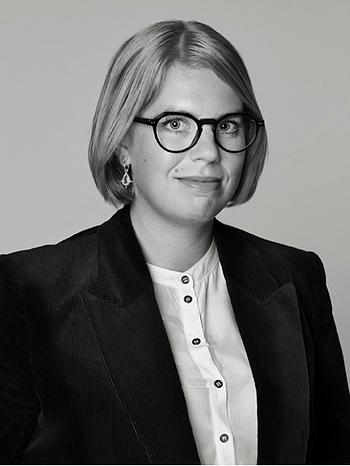Modern Art + Design presents: Jonglören by Erik Olson
Erik Olson ”Jonglören”
Erik Olson was born into the century of the modern age. Industrialism, socialism and modernism were some of the impulses creating a different society from the one his parents' generation had experienced. Despite growing up in a working-class home, Erik, and his brother Axel, was certain from an early age that they wanted to be artists. Together with their cousin Waldemar Lorentzon, the three formed the artists' group Gnistan in 1915. A decisive event for the three young artists occurred in 1919 when the group Gnistan came to the attention of the engineer Egon Östlund at an amateur exhibition in Halmstad. Östlund introduced them to his protégé Gösta Adrian-Nilsson (GAN). GAN is already established internationally and becomes the one who introduces the young Halmstad artists the European avant-gardism. GAN also was their entrance ticket to Léger's Académie Moderne in Paris, where Erik Olson travelled with Waldemar Lorentzon in early 1924. The two cousins rent an apartment in the middle of 86, rue Notre-Dame-des-Champs, where they become neighbors with GAN and Isaac Grünewald. On the ground floor was Léger's academy, which now had two new students, Erik and Waldemar.
At Léger's academy, Erik Olson got to know Otto G. Carlsund, who presented the two young Swedes to Paris's nightlife and places where the avant-garde met, such as the Dôme, the Rotonde and later La Coupole. Erik feels like he is in paradise and takes in the new winds blowing in Paris, the Mecca of avant-garde art. Despite having trouble raising money, he not only manages to apprentice himself to the master Léger but as soon as the opportunity arises, he makes study trips around Europe, eagerly studying everything from Giotto and Cimabue to the abstract paintings of Kandinsky.
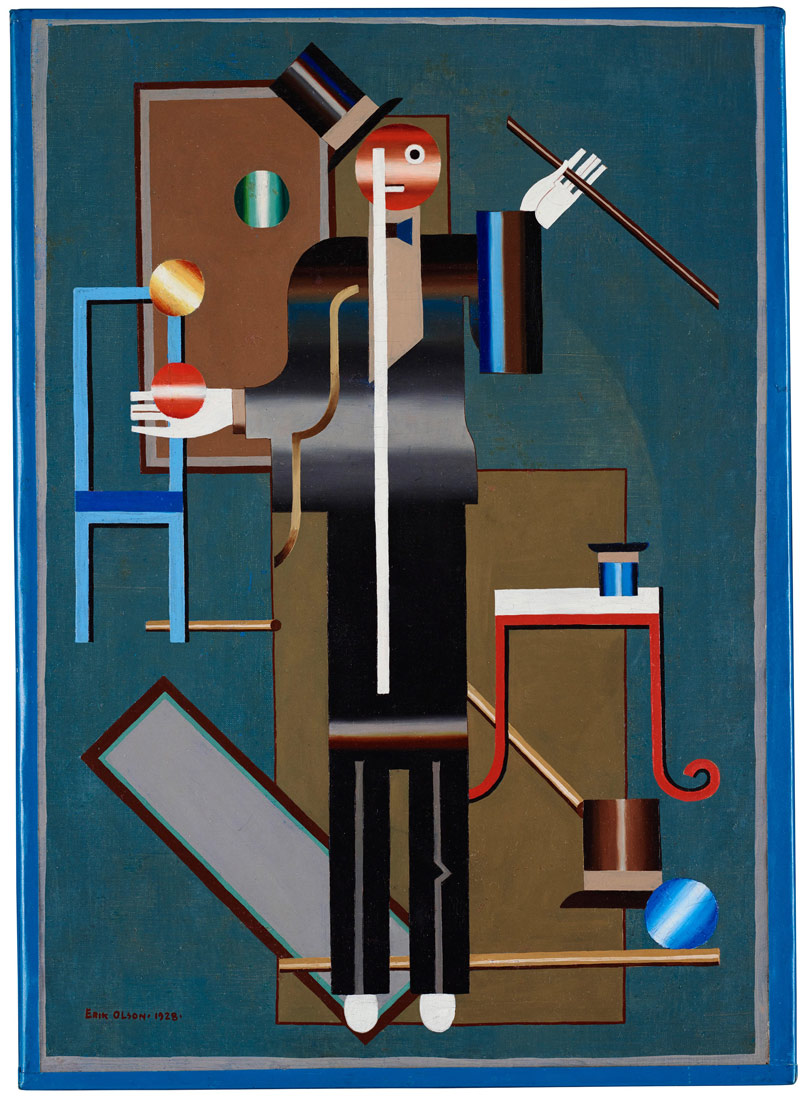
”
“Jonglören” is one of Erik Olson’s strongest Constructivist compositions and is part of a series of works that the artist created in 1927–28.
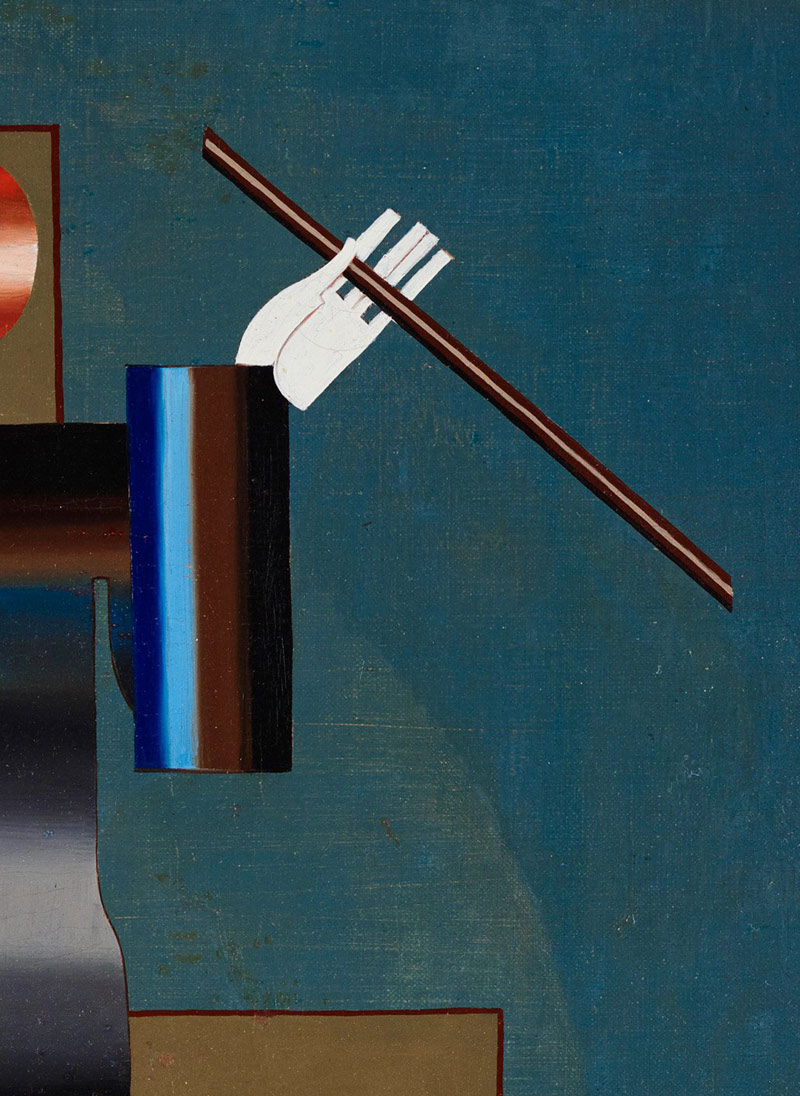
Eventually, the money runs out, and Erik is forced to return to Sweden to raise funds. By 1927 he is back in Paris and, like the seeker he is, he continues exploring the Parisian art scene. He now encounters more pure tendencies with artists such as Ozenfant, Mondrian and Christian Berg. Among his artist friends from Halmstad, Erik Olson is the one who stands out internationally. Not only was Erik the one Léger chose as one of his collaborators, but he was also the only Swedish and Scandinavian to be invited to exhibit at the exhibition Mondrian, de Stijl and their impact at the Marlborough Gallery in New York in 1964. Erik Olson exhibited regularly with Otto G. Carlsund and Christian Berg in Paris. In November 1928, the trio exhibited in Gothenburg together with GAN. Art historian and GAN connoisseur Jan Torsten Ahlstrand wrote the following about this exhibition in SDS in 1986: ”It was no coincidence that GAN chose Christian Berg, Otto G. Carlsund, and Erik Olson as co-exhibitors in Gothenburg's Konsthall in 1928 - the foremost in the Swedish avant-garde of that time.”
”Jonglören”, painted in 1928, is playful and elegant; the motif and refined colours instinctively sets the viewer in a good mood. One can see the influences of the teacher Léger and his “Tubism”, a version of Cubism in which he emphasized cylindrical forms. The imaginative composition have elements of so-called "impossible figures". The rectangles architecturally limit the room in the background and the chair and table on either side of the figure. One moment a shape appears to lie on the surface plane, and the next moment in the back of the room. Erik Olson has worked with colour and form to achieve harmony and movement in this modernistic masterpiece.
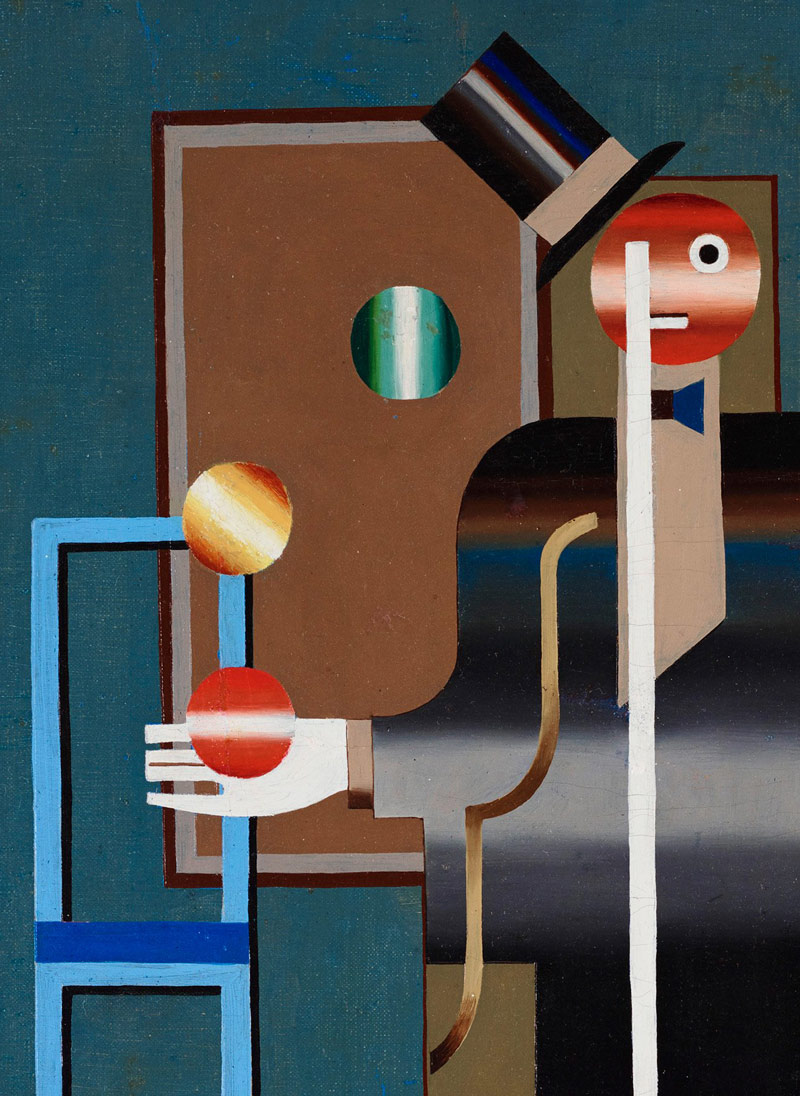
The work will be sold at this spring’s Modern Art + Design on May 16th-17th.
Estimate: 800'000 - 1'000'000SEK
Live Auction: May 16 – 17, Arsenalsgatan 2, Stockholm
Catalogue Online: May 2
Viewing May 11 – 15, Berzelii Park 1, Stockholm
Open Weekdays 11 am – 6 pm, Weekends 11 am – 4 pm
Contact Specialist

Stockholm
Andreas Rydén
Head Specialist, Art, Deputy Managing Director
+46 (0)728 58 71 39
